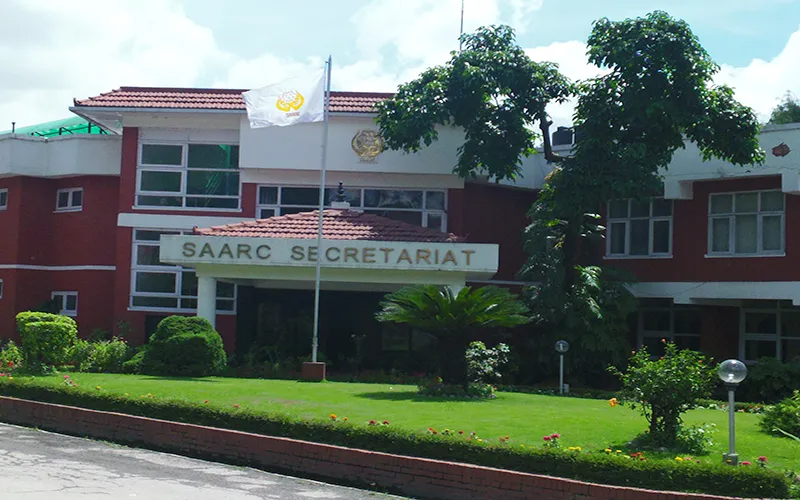-
CENTRES
Progammes & Centres
Location
India will gain very little by taking the lead in this venture. It already holds the rather envied position as the strongest economy within the region. SDB can hardly be expected to raise its global image or position.

On July 26, the South Asian Association for Regional Cooperation announced at the South Asian Free Trade Agreement Ministerial meeting in Thimpu, Bhutan, an intention to set up a development bank. The SAARC bank’s aim will be to provide infrastructure lending to a region in dire need of infrastructural development. While issues of paid-up capital and voting rights have yet to be decided, the formal agreement for this new bank is to be signed at the November SAARC Summit in Kathmandu, Nepal.
While New Delhi seems to have nearly convinced the country on the value of the New Development Bank being set up by the BRICS grouping, it will find it hard to argue in support of the SAARC Development Bank. India has already earmarked $11 billion for the NDB and as a founding member will have a rather large chunk in the proposed $50 billion Asian Infrastructure Investment Bank. The SDB will require a similar volume of capital investment. Can India afford it? As the largest economy in the bloc, it will be expected to take the lead in capital investment. It may not be easy for India to find the necessary financial resources for funding the demands that are made on the SDB. India remains a capital scarce economy and retains its borrowing status with all major MDBs.
The bank’s mandate will also be redundant in the light of what India already does. India is currently the only official development assistance regional provider to any of the SAARC countries. It provides $1.06 billion to countries in the subcontinent, with no other country offering any such assistance. While the SDB may encourage other SAARC countries to invest in infrastructure development, the point of creating another multilateral bank with all its complex management structure, and especially one in which India will have to take a leading financial role, does not make much sense.
The relative capital-scarce nature of all other SAARC economies is another reason that SDB may not work. Official development assistance is provided by countries that have the economic power and the surplus financial resources to help other countries. Financial fragility of SAARC economies and the absence of any non-regional Organisation for Economic Cooperation and Development members could see SDB severely constrained for adequate volumes of capital. War-torn Afghanistan, which is in the process of re-building and smaller island or land locked economies such as Maldives, Bhutan or Nepal that have no global integration except through India, will not have the resources to invest in such an undertaking. By this logic, the SDB may only be a slight augmentation of the official development assistance provided by India. The additional funds may come from by Pakistan and Bangladesh but given the state of their economy and their critical need for additional investment resources, this may be difficult.
The SAARC organisation set-up itself will have to be revised to accommodate the SDB. India’s relations with member countries like Pakistan and Bangladesh have been strained and volatile and have been the main reason for why SAARC group has not only been ineffective but nearly inoperative in the past. Bilateral tensions have kept SAARC as an economic bloc relatively weak as compared to other blocs like Association of Southeast Asian Nations, European Union and BRICS. While member countries of MDBs such as Asian Development Bank and World Bank find cohesiveness among known allies and groups, bilateral relations among member nations in SAARC will have a direct impact on the decision making within this new bank.
India will gain very little by taking the lead in this venture. It already holds the rather envied position as the strongest economy within the region. SDB can hardly be expected to raise its global image or position. India should invest in existing MDBs such as ADB or World Bank to be able to affect change in these SAARC countries and become more of a global economic power.
(The writer is an Associate Fellow at Observer Research Foundation, Delhi)
Courtesy: The Pioneer, August 11, 2014
The views expressed above belong to the author(s). ORF research and analyses now available on Telegram! Click here to access our curated content — blogs, longforms and interviews.